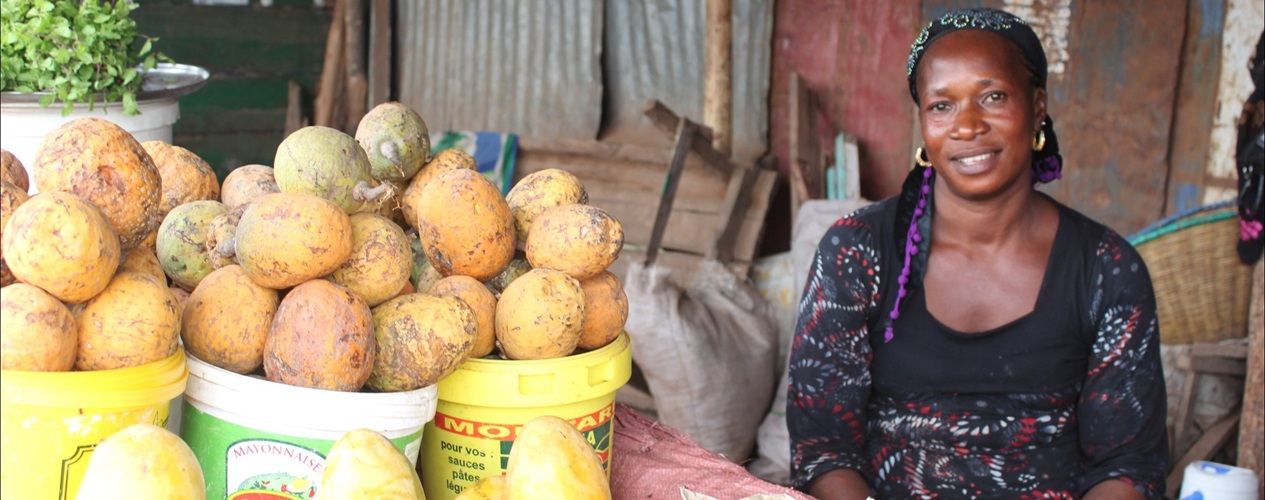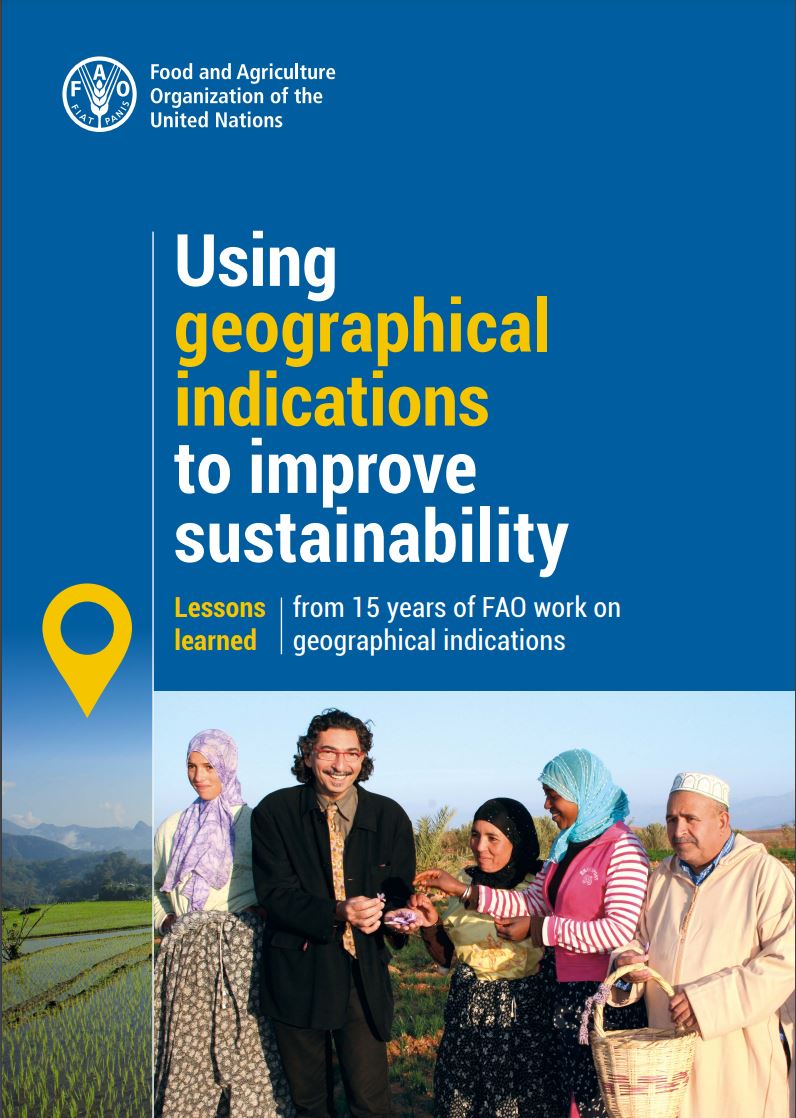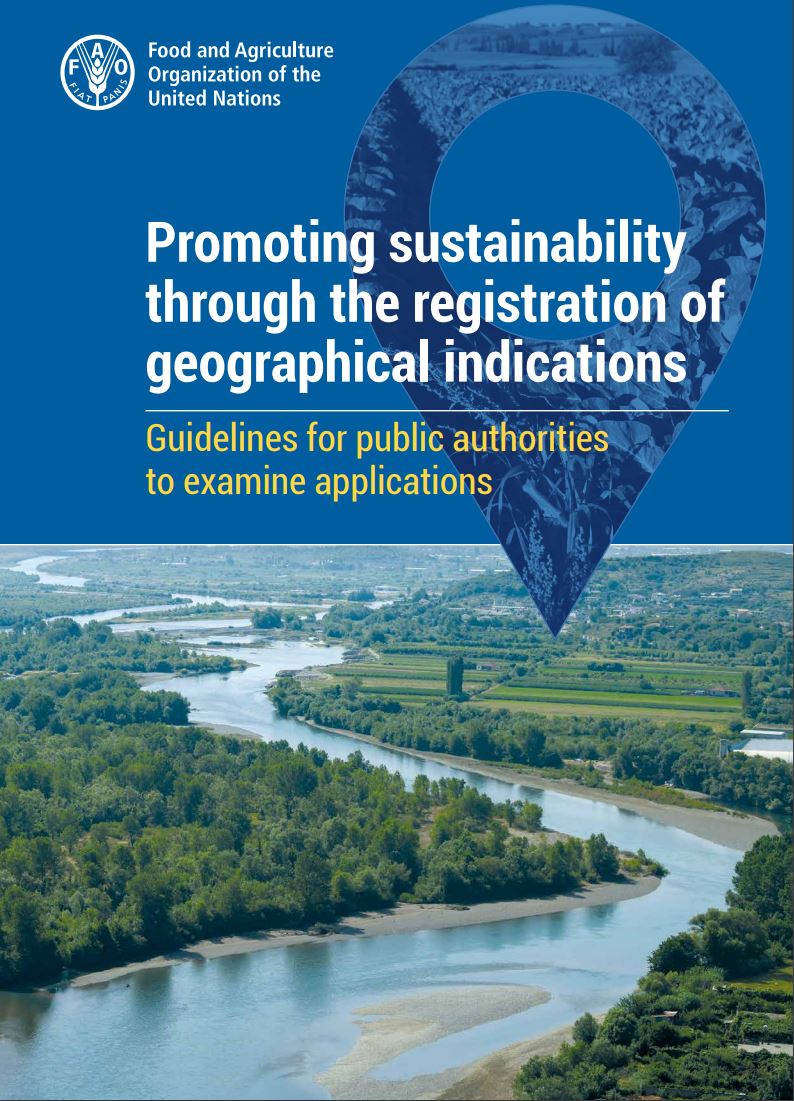
WHAT ARE GEOGRAPHICAL INDICATIONS?
A Geographical Indication (GI) is a sign used on goods that have a specific geographical origin and possess qualities or a reputation that are due to that origin. Most commonly, a GI consists of the name of the place of origin. The specific qualities involved are the result of local natural or human factors. GIs thus represent a collective asset linked to the local heritage and reputation. GIs are protected by intellectual property rights, in accordance with the World Trade Organization’s Agreement on Trade-Related Aspects of Intellectual Property Rights (TRIPS) and the Geneva Act of the Lisbon Agreement on Appellations of Origin and Geographical Indications.FAO’s ROLE
FAO’s work on GIs helps unleash their potential for sustainable development and sustainable food systems, in partnership with international organizations, countries, local authorities, communities and researchers.
NEWS
INTERNATIONAL DIALOGUE ON GIs IN AFRICA
The African Intellectual Property Organization is organizing an international dialogue on the development of GIs in Africa. The event will take place in Cameroon from 17 to 19 April 2024. Click here for more information.

Since its first edition in 2007, InterGI has become the reference professional training on Geographical Indications. The training events target professionals from all continents and from diverse backgrounds – producer organisations, food industry, public officers from Justice and technical Ministries in charge of GIs, NGO collaborators, consulting firms.
NEW PUBLICATIONS
PROCEEDINGS - THIRD REGIONAL CONSULTATION ON GIs IN EUROPE AND ASIA
In 2021, FAO and the Organization for an International Geographical Indications Network (oriGIn) hosted the ‘’ Third regional consultation on geographical indications in Europe and Central Asia”. The consultation focused on GIs’ global trends, the state of affairs in various countries and recommendations for future activities.
These proceedings provide an overview of the topics discussed, key recommendations and country studies.
LABELLING AND CERTIFICATION SCHEMES FOR INDIGENOUS PEOPLES' FOODS
This review analyses the potential of labelling and certification schemes for Indigenous Peoples to be able to market their food products.
In particular, the publication focuses on schemes that are designed by, with and for Indigenous Peoples, and that can provide economic, social and environmental benefits while protecting and promoting their unique values centered around the respect of life and Mother Earth.
USING GEOGRAPHICAL INDICATIONS TO IMPROVE SUSTAINABILITY
This brief presents best practices and lessons learned drawn from the implementation of a comprehensive approach to GIs for over 10 years.
The policy guidance provided through the brief highlights the importance of endogenous interventions that put local producers at the centre of geographical indication processes, as well as the need for public institutions to play a key role in the implementation of geographical indication approaches.
PROMOTING SUSTAINABILITY THROUGH THE REGISTRATION OF GEOGRAPHICAL INDICATIONS
This publication provides guidance for public authorities in examining requests for the registration of geographical indications.
The publication highlights the importance of public institutions to support the creation of enabling environments that contribute to the development of sustainable food systems through geographical indication approaches.
HIGHLIGHTED PUBLICATIONS
KEY FACTS
GIs IN THE WORLD:
Asia: 3 973
Africa: 205
Central/South America: 556
North America: 428
Europe: 4 016
Oceania: 138
World: 9 332
(oriGin)
PAST EVENTS
Worldwide Symposium on Geographical Indications: the Symposium brings together representatives of national administrations, producers and GI specialists. It provides a space for exchanging ideas and gathering technical insight, and on recent developments in the field.
Worldwide perspectives on Geographical Indications: the conference brought together over 200 researchers, public authorities, producers and international organizations from 47 countries. It focused on the role of GIs in the achievement of the UN SDGs through their positive impact on the economic, social and environmental levels of rural territories.
RELATED LINKS
- FAO-oriGIn Series of Webinars
- GIs and sustainable use of genetic resources
- Globally Important Agricultural Heritage Systems (GIAHS)
- Origin labelling of food boosting local economies








